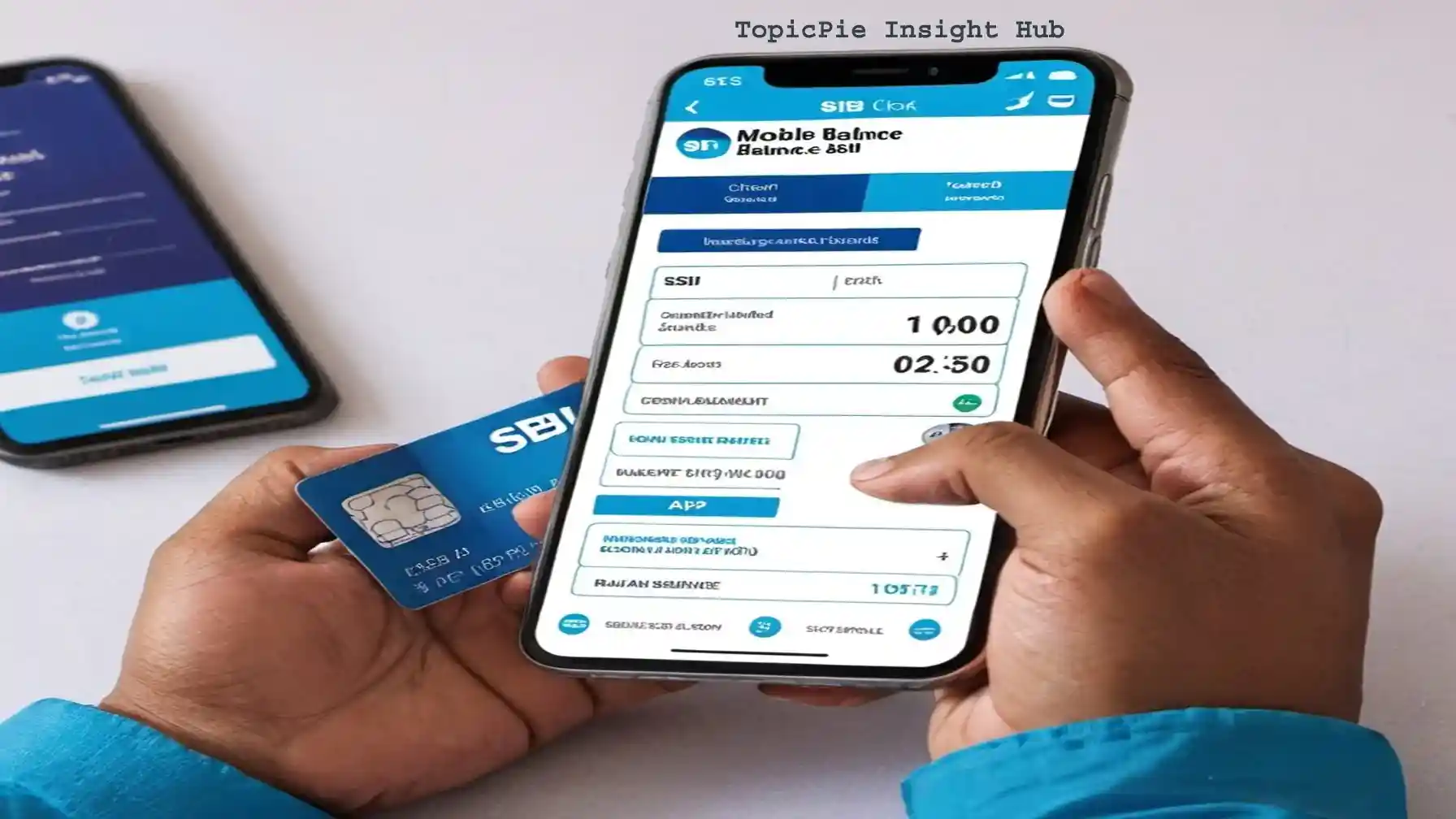Cash is on the retreat! In this digital age, it’s digital wallets and contactless payments that are reigning supreme. Gone are the days of rummaging for loose change or waiting in line at the ATM. With a tap or a swipe, these innovative technologies are revolutionizing how we handle our finances, offering a lightning-fast, frictionless, and secure experience. But are we hurtling towards a world completely devoid of cash?
This blog post dives into the fascinating world of digital wallets and contactless payments. We’ll explore the pros and cons of ditching cash altogether, examining the impact on both consumers and businesses. We’ll also see how banks are gearing up for this shift towards a potentially cashless future. So, ditch the bulky wallet and grab your smartphone – it’s time to embark on a journey exploring the exciting potential of a digital-first financial landscape!
Digital Wallets and Contactless Payments: Pros and Cons of a Cashless World
In a cashless world, the convenience of making transactions without physical currency is undeniable. One of the major advantages is increased efficiency – no more fumbling for change or dealing with counterfeit bills. Digital wallets and contactless payments also offer enhanced security by reducing the risk of theft and fraud.
On the flip side, some argue that going completely cashless might worsen financial exclusion for those without banking services or technology. Additionally, concerns about privacy and data security emerge due to digital transactions leaving personal information vulnerable to cyber threats.
However, embracing digital payments opens up opportunities for innovation and economic growth. As society shifts towards a cashless economy, it’s crucial to navigate these pros and cons thoughtfully to ensure inclusivity while reaping the benefits of technological advancement in finance.
Digital Wallets and Contactless Payments: Expanding Horizons
The rapid rise of digital payments, fueled by technological advancements, has fundamentally changed how we handle transactions. From online shopping to instant peer-to-peer transfers, digital wallets and contactless payments offer unparalleled convenience and efficiency. Businesses are wise to embrace this shift towards a cashless economy. By adopting digital payments, they can cater to consumer preferences for quick, secure transactions, while also reaping benefits like reduced operational costs, faster settlements, and simplified record-keeping.
Also Read: The Future of Money: What Central Bank Digital Currency Means for Consumers
Digital payment platforms, like Apple Pay, Google Pay, or regional alternatives, are constantly evolving. They offer features like loyalty programs, budgeting tools, and robust security measures to protect user information. This ongoing expansion empowers businesses of all sizes to streamline their payment processes, improve customer satisfaction, and potentially gain a competitive edge.
As more industries explore the potential of digital payments, it becomes crucial for banks and financial institutions to adapt their services accordingly. Embracing this expansion will not only ensure they meet the evolving demands of consumers, but also drive innovation in the financial sector, paving the way for a more efficient and interconnected global economy.
Three Steps for Banks to Prepare for Digital Wallets and Contactless Payments:
With the rapid shift towards a cashless society, banks must adapt to meet the changing needs of consumers. To prepare for this evolution, banks can take several crucial steps.
Investing in robust digital infrastructure is essential. Banks need to enhance their online and mobile banking platforms to offer seamless and secure digital payment solutions. This includes implementing advanced encryption technologies to protect customer data.
Fostering partnerships with fintech companies can be advantageous. Collaborating with innovative startups can enable banks to leverage cutting-edge technology and stay ahead in the digital payments landscape.
Prioritizing customer education is key. Banks should educate their customers on the benefits of digital wallets and contactless payments while providing guidance on how to use these technologies securely.
By taking these proactive steps, banks can position themselves for success in a cashless economy.
Paying it Forward:
As we transition towards a cashless economy, the concept of “paying it forward” takes on a whole new meaning. Digital wallets and contactless payments allow for seamless transactions that can be easily shared or gifted to others. This shift doesn’t just simplify everyday purchases; it opens up exciting possibilities for spreading kindness and generosity.
Imagine covering a friend’s coffee with a quick tap on your phone, or donating to a local homeless shelter with a touch of a button. Apps like [mention specific app] allow users to buy a coffee for the person behind them in line, while platforms like [mention specific platform] make contactless charitable donations a breeze.
The convenience of digital payment methods enables people to make spontaneous gestures of goodwill without the need for physical cash. This fosters a culture of giving back within communities. With just a few taps on their devices, individuals can make meaningful contributions that have ripple effects far beyond their initial actions. Imagine a world where everyone, regardless of the amount they have, can easily contribute to a good cause or brighten someone’s day. The ease and speed of digital payments empower everyone to participate in paying it forward, creating a ripple effect of positive change in our interconnected world.
More Than a Lender: What Small Businesses Want from Banks
Small businesses are the backbone of our economy, driving innovation and creating job opportunities. Beyond just lending money, small businesses want banks to provide tailored financial solutions that meet their specific needs. This includes access to affordable credit options, flexible payment terms, and personalized advice on managing cash flow efficiently.
In addition to financial support, small businesses value banks that offer digital tools and technology to streamline their operations. Online banking platforms that allow for easy invoicing, quick transactions, and real-time monitoring of accounts are highly sought after by entrepreneurs looking to save time and improve productivity.
Furthermore, transparency in fees and charges is crucial for small businesses when choosing a bank partner. Clear communication about interest rates, service fees, and any other costs associated with banking services helps build trust between the business owner and the financial institution.
By understanding what small businesses truly want from banks – beyond just being lenders – financial institutions can better serve this vital sector of the economy. The key lies in building strong relationships based on trust, reliability, and a genuine commitment to supporting small business growth.
Should We Embrace Digital Wallets and Contactless Payments for a Cashless Society?

Imagine a world without cash – is this a utopian dream or a dystopian nightmare? The question of transitioning to a cashless society sparks debates among economists, policymakers, and the general public. Advocates argue that ditching cash could offer a multitude of benefits. Increased efficiency, reduced crime related to physical currency, and even improved financial inclusion for underserved populations like the unbanked who might have easier access to digital financial services are all potential advantages.
On the other hand, critics raise valid concerns. Privacy issues loom large in a cashless society. Every digital transaction leaves a footprint, potentially exposing spending habits and personal information to data breaches or even government surveillance. Additionally, not everyone has equal access to the technology needed for digital payments. Excluding those without smartphones or reliable internet access could exacerbate social inequalities.
Also Read: Ohio National Financial Services: A Trusted Partner for Retirement Planning
The rise of digital wallets and contactless payments has undeniably transformed how we conduct transactions. The convenience they offer is undeniable in a fast-paced world where time is precious. However, ensuring that everyone has equal access to these technologies remains a crucial consideration in moving towards a cashless economy. Financial inclusion cannot be left behind.
As we navigate this shift towards a cashless society, it’s essential to weigh both the benefits and challenges associated with such a transformation. Adapting our financial systems requires careful planning and consideration of how best to address any potential drawbacks while maximizing the advantages presented by embracing digital payments fully. What are your thoughts on the cashless society? Share your comments below or do some further research to learn more about the potential impact on our financial future!
The Argument for Digital Wallets and Contactless Payments: Reducing Cash Dependency
In today’s fast-paced world, the case for less cash is gaining momentum. With the rise of digital wallets and contactless payments, many are questioning the need for physical currency.
One key argument in favor of moving towards a cashless society is the increased convenience it offers. No more fumbling for change or worrying about carrying enough bills – just a quick tap or swipe to complete a transaction.
Additionally, going cashless can help reduce crime related to cash theft and counterfeiting. Electronic transactions leave a digital trail that can aid in tracking illicit activities, making it harder for criminals to operate undetected.
Moreover, transitioning away from cash can lead to cost savings for businesses and governments alike. The expenses associated with printing, transporting, and securing physical money could be significantly reduced in a digital economy.
As we weigh the benefits of moving towards less cash against the challenges that may arise during this transition period, it becomes clear that embracing digital payment methods has its advantages in our evolving economic landscape.
Cash Vs. Crypto: A Tale of Two Titans
In the realm of payment methods, a fascinating debate has arisen between cash, the traditional king, and cryptocurrency, the innovative challenger. Cash, the tangible form of tender we all know, reigns supreme in terms of widespread acceptance by merchants worldwide. However, its security is not without limitations, as physical bills can be stolen or lost.
On the other hand, cryptocurrency operates digitally through blockchain technology, offering a unique blend of security and anonymity. Transactions are encrypted, potentially making them more secure than carrying cash. The anonymity aspect also appeals to those who value privacy in their financial transactions. However, the value of cryptocurrencies can be quite volatile, experiencing significant fluctuations compared to the relative stability of cash backed by governments.
Despite this volatility, crypto presents exciting opportunities. Borderless transactions with potentially lower fees compared to traditional banking systems are just a few of the advantages. While cryptocurrencies are still carving their niche, they are gaining traction in various industries, from online gaming to art purchases.
Looking towards the future, it’s likely that cash and crypto will find ways to coexist. Regulations surrounding cryptocurrencies are constantly evolving, shaping how they are used and integrated into financial systems. Additionally, the rise of Central Bank Digital Currencies (CBDCs) – digital versions of traditional currencies backed by governments – could be another factor to consider in the future of payments.
Ultimately, the choice between cash and crypto depends on individual needs and preferences. Cash offers familiarity and wide acceptance, while crypto presents an innovative option with the potential for faster transactions, lower fees, and even anonymity. As technology continues to evolve, the landscape of payments will undoubtedly transform, and both cash and crypto may play significant roles in the financial world of tomorrow.
Solutions for Digital Wallets and Contactless Payments
As we transition towards a cashless economy, the solution lies in a multi-pronged approach that embraces innovation, education, and collaboration. Digital wallets and contactless payments offer a compelling solution, boasting convenience, security, and efficiency in everyday transactions.
Beyond the general benefits, digital wallets come with additional perks. Many integrate loyalty programs and budgeting tools, making them a one-stop shop for managing your finances on the go. However, ensuring the security of these digital transactions is paramount. Banks must invest in robust cybersecurity measures like multi-factor authentication and data encryption to build trust with users transitioning away from cash.
Education is key to empower individuals to navigate this shift confidently. Financial literacy programs should be especially targeted towards demographics that might require more support, such as the elderly or low-income communities.
Collaboration among all stakeholders is crucial. Financial institutions, businesses, and policymakers must work together to implement regulations that foster the growth of digital payments while ensuring inclusivity for everyone. This may involve providing alternative solutions for those who are unable or unwilling to participate in a fully cashless system.
By collectively embracing technological advancements, fostering a culture of financial literacy, and prioritizing user security, we can pave the way towards a more efficient and interconnected cashless economy. However, we must acknowledge concerns like dependence on technology or potential privacy issues. Investing in offline payment options and strong data protection regulations can help mitigate these concerns and ensure a smooth transition for everyone involved.
Is a Cashless Society the New Reality?
Will the jingle of coins become a relic of the past? As digital payments surge in popularity, a cashless society seems on the horizon, but is everyone ready for this future?
With the rapid advancement of technology and changing consumer preferences, a cashless society appears increasingly inevitable. The convenience and efficiency of digital wallets and contactless payments are undeniable, making traditional cash transactions seem outdated. Many countries are already embracing this shift, with Scandinavia leading the charge. In Sweden, for example, cash payments now account for less than [percentage] of all transactions.
The benefits of a cashless society extend beyond just convenience. Digital transactions leave an audit trail, promoting financial transparency and potentially making it easier to track spending habits. Additionally, the security features of digital wallets can reduce the risk of theft compared to carrying physical cash.
However, transitioning to a completely cashless society raises concerns about accessibility. Not everyone has equal access to the technology needed for digital payments. The elderly who might be less comfortable with smartphones, or unbanked communities without access to traditional bank accounts, could be left behind. This digital divide could exacerbate social inequalities if not addressed.
Also Read: Mastering Overdraft Bank Accounts for Financial Well-Being
As we navigate towards a future with less reliance on physical money, it’s crucial to weigh the benefits against the potential challenges that come with a fully cashless economy. It’s important to find solutions that ensure everyone can participate in this evolving financial landscape. Government initiatives promoting digital literacy training or alternative payment methods for the unbanked can help bridge the gap and ensure a smooth transition for all.
Money is Technology: Will it Be Replaced?
In today’s rapidly evolving digital landscape, money is undergoing a transformation. The traditional concept of physical currency is being challenged by the rise of digital payment methods and cryptocurrencies. With the increasing popularity of mobile wallets and contactless payments, the way we perceive and use money is changing.
As technology continues to advance, there is a growing debate about whether traditional forms of money will be replaced entirely. Cryptocurrencies like Bitcoin have shown that it’s possible to conduct transactions without relying on centralized financial institutions or physical cash.
While some argue that digital currencies could eventually replace traditional forms of money due to their convenience and efficiency, others believe that cash will always have a place in society for various reasons such as privacy concerns and accessibility for marginalized populations.
The future relationship between money and technology remains uncertain, but one thing is clear: the way we interact with currency is evolving in ways we never imagined.
Global Payment Trends:

In today’s rapidly evolving digital landscape, global payment trends are shifting towards a cashless economy. With the rise of digital wallets and contactless payments, consumers worldwide are embracing the convenience and security offered by these innovative solutions.
From mobile payment apps to e-commerce platforms, the way we transact is undergoing a significant transformation. As technology continues to advance, more people are opting for seamless and efficient payment methods that eliminate the need for physical currency.
The adoption of digital payment systems is not limited to developed countries; emerging economies are also witnessing a surge in cashless transactions. This trend highlights the universal appeal of convenient and cost-effective financial services that cater to diverse consumer needs.
As businesses adapt to meet changing consumer preferences, understanding global payment trends becomes crucial for staying competitive in an increasingly interconnected world. By leveraging data analytics and adopting versatile payment solutions, companies can streamline operations and enhance customer experiences across borders.
Pros of a Cashless Society: Convenience, Security, and Inclusion
In a cashless society, convenience reigns supreme. Imagine a world where a quick tap of your phone using a digital wallet like Apple Pay or Google Pay completes any transaction. No more scrambling for exact change or waiting in line at an ATM for cash. This ease of use extends beyond speed. Digital transactions offer the ability to effortlessly track your spending and create budgets with detailed records.
Security is another major advantage of a cashless economy. Digital transactions leave an encrypted trail that can aid in tracking fraudulent activities, making it harder for criminals to operate undetected. Furthermore, many digital payment methods incorporate robust security features like multi-factor authentication, adding an extra layer of protection compared to carrying cash.
The risk of theft also diminishes significantly in a cashless society. Without the temptation of physical bills, the chances of falling victim to muggings or robberies decrease. This can contribute to safer communities where individuals feel more secure conducting everyday transactions.
Perhaps the most exciting benefit of a cashless society lies in its potential to promote financial inclusion. For those who haven’t had access to traditional banks, mobile money platforms or government initiatives focused on digital finance could offer easier access to essential banking services. This financial inclusion can empower previously underserved populations to fully participate in the economy and build a brighter future.
Which Countries are best Positioned to Go Cashless?
When it comes to countries best positioned to go cashless, the Nordic nations like Sweden and Norway stand out as frontrunners. These countries boast high levels of digital infrastructure and widespread acceptance of electronic payments. In Sweden, for example, cash transactions make up only a small percentage of overall payments, and the government has discussed the possibility of phasing out physical currency in the long term. This shift towards a cashless society has been fueled by strong internet connectivity and a tech-savvy population.
Beyond the Nordics, Singapore is another strong contender in the cashless race. Their Smart Nation program actively promotes digital innovation, and Singaporeans are increasingly embracing mobile payment solutions over traditional cash transactions. Other countries like South Korea and China are also rapidly moving towards a cashless economy, driven by technological advancements and changing consumer preferences. It’s important to note that while these nations are making significant strides, a complete elimination of cash is unlikely in the immediate future.
Looking beyond established economies, countries like the Netherlands and Japan are also making significant progress in adopting cashless transactions. Additionally, Kenya’s success with mobile money platforms demonstrates the potential for leapfrogging traditional systems in developing economies. As technology continues to evolve and consumer preferences shift, the landscape of cashless leadership is likely to see new contenders emerge in the years to come.
Paths to a Cashless World: A Multifaceted Journey
In today’s rapidly evolving digital landscape, the paths leading towards a cashless world are indeed diverse and multifaceted. One prominent avenue is the widespread adoption of digital wallets like Apple Pay, Google Pay, or Samsung Pay by consumers worldwide. These digital wallets offer unmatched convenience, security, and efficiency in everyday transactions, allowing users to make payments with a simple tap or scan of their smartphones.
Another pathway to a cashless society lies in collaboration. Financial institutions, tech companies, and regulatory bodies must work together to establish standardized protocols for electronic payments. This standardization fosters interconnectivity and interoperability across platforms, ensuring seamless financial interactions on a global scale. Furthermore, it can enhance security by creating uniform regulations and promoting robust cybersecurity measures to address potential security concerns in a cashless world.
Mobile banking apps and peer-to-peer payment systems are also significant contributors to accelerating the cashless transition. These solutions empower individuals to manage their finances digitally, reducing reliance on physical currency. As businesses increasingly embrace e-commerce platforms and online payment gateways, the shift towards cashlessness gains further momentum. This trend not only streamlines commercial transactions but also promotes financial inclusion by extending digital payment options to underserved populations.
However, the road to a cashless world is not without its challenges. While e-commerce offers vast opportunities, disparities in internet access and digital literacy gaps in certain populations could pose hurdles.
Embracing various pathways towards a cashless world reflects our collective adaptation to an increasingly digitized economic landscape. By exploring these diverse routes and addressing potential challenges, we can navigate towards a future where traditional forms of currency may become obsolete in favor of more efficient and inclusive electronic alternatives.
Cashless Society: Advantages
In a cashless society, one of the key advantages is increased convenience. With digital wallets and contactless payments, transactions can be completed swiftly and securely with just a tap or click. This eliminates the need to carry physical cash or wait in line at ATMs.
Another benefit of a cashless economy is improved tracking and transparency. Every digital transaction leaves a trail, making it easier to monitor spending habits and track expenses accurately. This can lead to better budgeting and financial management for individuals and businesses alike.
Furthermore, going cashless promotes financial inclusion by providing access to banking services for those who may not have easy access to traditional banks. Digital payment methods offer a more inclusive way for people to participate in the economy without relying solely on physical currency.
Additionally, reducing reliance on cash can help combat issues related to theft and counterfeiting. Electronic transactions are more secure than carrying large amounts of cash, decreasing the risk of theft or fraud incidents that often accompany paper money transactions.
Transitioning towards a cashless society offers numerous benefits that cater to modern-day needs and preferences in an increasingly digital world.
Cashless Society: Disadvantages

As we move towards a cashless society, there are certain disadvantages to consider. Increased surveillance and privacy concerns are among the main issues raised. With every transaction leaving a digital footprint, personal data could be at risk.
Moreover, not everyone has access to technology or feels comfortable using it, which could lead to financial exclusion for some individuals. Additionally, relying solely on electronic payments may make people more vulnerable to cyber attacks and fraud.
Another downside is the possibility of system outages or technical glitches that could disrupt daily transactions and cause inconvenience. Furthermore, transitioning completely away from cash might impact those who rely on it for budgeting purposes or in case of emergencies.
While there are clear benefits to a cashless economy, addressing these disadvantages will be crucial in ensuring a smooth transition for all members of society.
Exploring Cash Production in the Era of Digital Wallets and Contactless Payments:
Have you ever wondered about the environmental impact of cash production? The process of printing and minting physical money consumes significant amounts of resources like paper, ink, and metal. This raises concerns about deforestation for paper production and pollution from manufacturing processes.
Another aspect to consider is the cost involved in producing cash. Governments spend millions on designing, printing, distributing, and securing physical currency every year. These expenses could potentially be reduced or redirected towards more sustainable initiatives in a cashless economy.
Moreover, the wear and tear of circulating cash also contribute to its environmental footprint. As bills and coins get damaged or worn out over time, they need to be replaced – adding to the cycle of resource consumption associated with physical money.
In light of these factors, transitioning towards digital wallets and contactless payments could significantly reduce the environmental burden caused by traditional cash production methods.
Is the Cashless Society Really Coming?
Is the cashless society really coming? With the rapid advancement of technology and changing consumer behavior, it seems inevitable. The rise of digital wallets, contactless payments, and online banking has already transformed how we handle transactions.
Many countries are making significant strides towards a cashless economy, with some even setting target dates to phase out physical currency. This shift is driven by convenience, security benefits, and the overall efficiency of digital payment systems.
While there are still challenges to overcome before we can completely abandon cash – such as cybersecurity concerns and ensuring financial inclusion for all individuals – the trend towards a cashless society is undeniable. As more businesses and consumers embrace electronic forms of payment, the transition away from physical money becomes increasingly plausible.
The question now is not if but when will we fully transition to a cashless society on a global scale? Only time will tell how quickly this transformation will take place.
Impact of Digital Wallets and Contactless Payments on Disadvantaged Communities and Peoples:
With the rise of a cashless economy, disadvantaged communities and individuals face both opportunities and challenges. On one hand, digital payments can provide greater financial inclusion by allowing those without access to traditional banking systems to participate in the economy. However, there are concerns about marginalized groups being left behind due to lack of technology or internet access.
Transitioning to a cashless system may be challenging for those who heavily rely on cash transactions. It could exclude them from fully participating in economic activities. Additionally, those unfamiliar with digital payment methods face increased vulnerability to cyber fraud.
To address disparities, policymakers and businesses must ensure equal opportunities for all to adapt to a cashless society. This includes education, infrastructure development, and support programs tailored to disadvantaged communities. Bridging this gap fosters a more inclusive financial landscape for individuals regardless of their background or socioeconomic status.
More Americans Embrace the Cashless Economy:
In today’s fast-paced world, a growing number of Americans are discovering the convenience and efficiency of the cashless economy. Digital wallets and contactless payments are becoming increasingly popular, leading to a decline in traditional cash transactions. This shift is evident across various sectors, from retail stores and restaurants to transportation services. Many businesses now prefer electronic payment methods due to their speed, security, and efficiency.
As technology continues to advance, consumers are seeking seamless ways to pay without the need for physical currency. This trend goes beyond just convenience. Cashless transactions can offer benefits like better financial tracking and transparency.
The rise of online shopping and e-commerce platforms further fuels the cashless movement. These platforms require electronic payment methods, allowing for quick and secure transactions from anywhere at any time. Mobile payment apps have also become a popular tool for managing finances on-the-go.
The growing adoption of cashless transactions signifies a significant transformation in how Americans conduct everyday financial activities. However, it’s important to remember that a portion of the population still relies on cash. As the cashless trend progresses, ensuring financial inclusion for all will be an important consideration.
Americans Use Cash Less, Envision Cashless Society:
As Americans increasingly ditch their wallets for digital alternatives, the vision of a cashless society seems closer than ever. Studies show that by 2022, only around 14% of Americans reported using cash for all or most purchases. The convenience, efficiency, and security of digital wallets and contactless payments are highly appealing. They fundamentally reshape how we interact with money.
The transition to a cashless future isn’t without hurdles. Bridging the digital divide for those lacking access to technology and ensuring robust cybersecurity measures are crucial challenges to address.
However, with careful planning and continued innovation in financial technology, we can overcome these obstacles. A cashless society could provide convenience. It might unlock benefits like economic growth through faster transactions. Additionally, it could improve financial inclusion by offering wider access to digital financial tools.
The global trend towards digital payments is undeniable. By staying informed about these advancements, we can adapt to new technologies. Addressing the needs of all individuals within our societies paves the way for a smoother transition. Into a future where cash may become less and less common, we can adapt.








